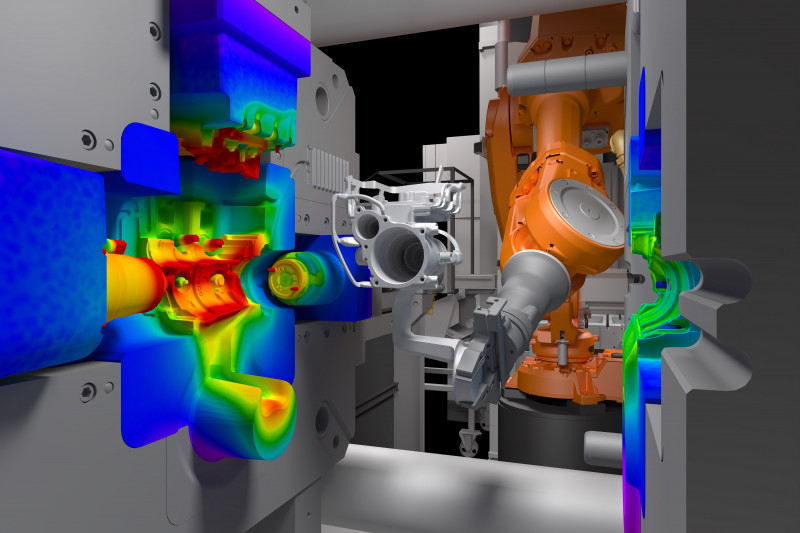Introduction:
Aluminum machining is a widely used manufacturing process that involves shaping aluminum into various forms for different applications. This article provides an overview of the aluminum machining process and techniques, highlighting the key steps involved in turning raw aluminum into a finished product.
1. Material Selection:
The first step in aluminum machining is selecting the appropriate type of aluminum for the desired application. Aluminum alloys are commonly used due to their excellent strength-to-weight ratio, corrosion resistance, and high thermal conductivity. The selection process considers factors such as the specific mechanical properties required, cost, availability, and the intended application’s environmental conditions.
2. Material Preparation:
Once the suitable aluminum alloy is chosen, it undergoes material preparation. This involves cutting the aluminum into smaller, manageable pieces using cutting tools like saws or shears. The material is then cleaned to remove any contaminants that could affect the machining process.
3. Machining Methods:
There are several machining methods used in aluminum machining, depending on the desired shape and complexity of the final product. Some common techniques include:
a. Turning: Turning is a machining process that involves rotating the aluminum piece while a cutting tool removes material to create cylindrical shapes such as rods, shafts, and tubes.
b. Milling: Milling refers to the process of using rotary cutters to remove material from a workpiece. It is used to create various shapes, including flat surfaces, slots, and complex contours.
c. Drilling: Drilling involves creating holes in the aluminum workpiece using a rotating cutting tool. It is a versatile technique used in many applications.
d. Tapping: Tapping is the process of creating internal threads in the aluminum material using a tool called a tap. It allows for the attachment of screws or bolts to the workpiece.
e. Grinding: Grinding is used to achieve fine surface finishes and precise dimensions. It involves using abrasive wheels to remove material from the aluminum workpiece.
4. CNC Machining:
Computer Numerical Control (CNC) machining is a commonly used technique in aluminum machining. It utilizes pre-programmed computer software to control the movement of precision machines. CNC machines offer high precision, repeatability, and the ability to create complex shapes with minimal human intervention. This method is particularly suitable for mass production and intricate designs.
5. Finishing:
After the machining process, the aluminum workpiece may undergo finishing to improve its appearance and functionality. Finishing techniques include sanding, polishing, anodizing, or applying protective coatings. These processes help enhance the aesthetic appeal, corrosion resistance, and durability of the final product.
6. Quality Control:
Throughout the aluminum machining process, quality control measures are crucial to ensure that the finished product meets the required specifications. This involves inspecting the workpiece at various stages, using tools such as calipers, micrometers, and coordinate measuring machines (CMMs). Any deviations or defects are identified and corrected to maintain product quality.
Conclusion:
Aluminum machining plays a vital role in various industries, including automotive, aerospace, construction, and electronics. Understanding the process and techniques involved is essential for manufacturers to produce high-quality aluminum products efficiently. As technology advances, CNC machining continues to revolutionize the aluminum machining industry, enabling the production of complex and precise components. By considering material selection, employing appropriate machining methods, and implementing rigorous quality control measures, manufacturers can ensure the successful fabrication of aluminum parts and products.
-

- Magnesium alloy foundry parts bicycle wheel with CNC machining & surface finishing
-

- Mangensium الائے ڈائی کاسٹنگ Thixomolding ہیلمیٹ
-

- High precision magnesium alloy die casting parts for automotive ignition lock
-

- ہول سیل میگنیشیم الائے بیبی سائیکل 3 سے 5 سال کی عمر کے لیے 12 انچ بچوں کی سائیکل OEM سستی
-

- Magnesium thixomolding parts UAV housing
-

- موٹر سائیکل کے لیے میگنیشیم الائے ڈائی کاسٹنگ سخت فورک

 0086-750-5616188
0086-750-5616188 +86 13392089688
+86 13392089688 sales@zhongmei-tech.com
sales@zhongmei-tech.com








